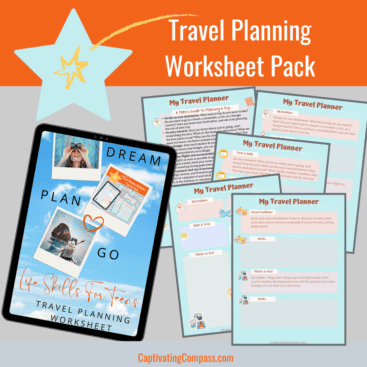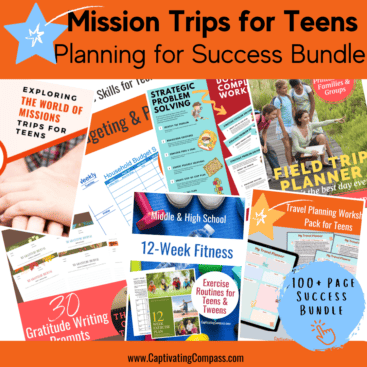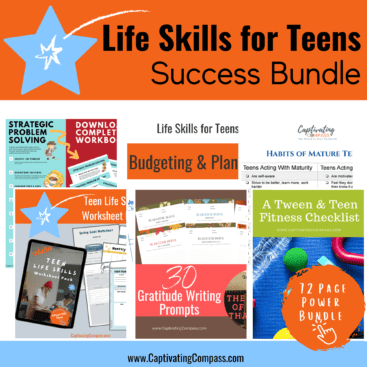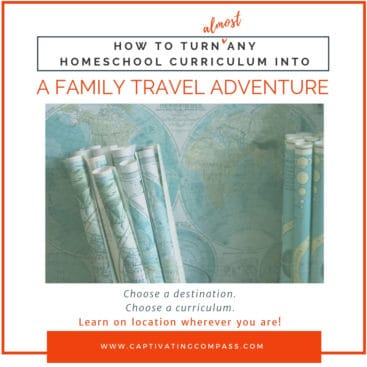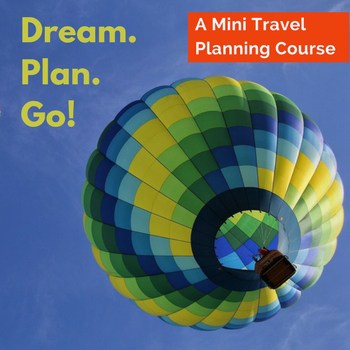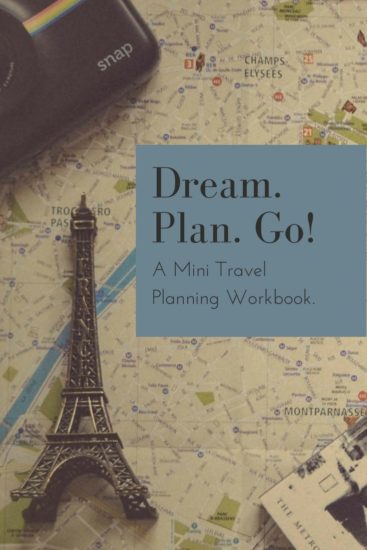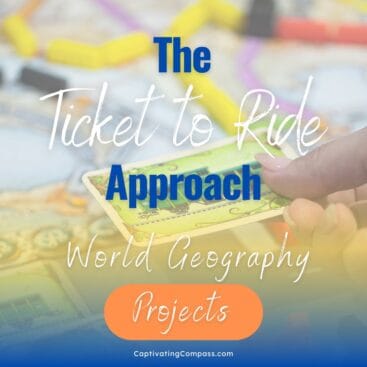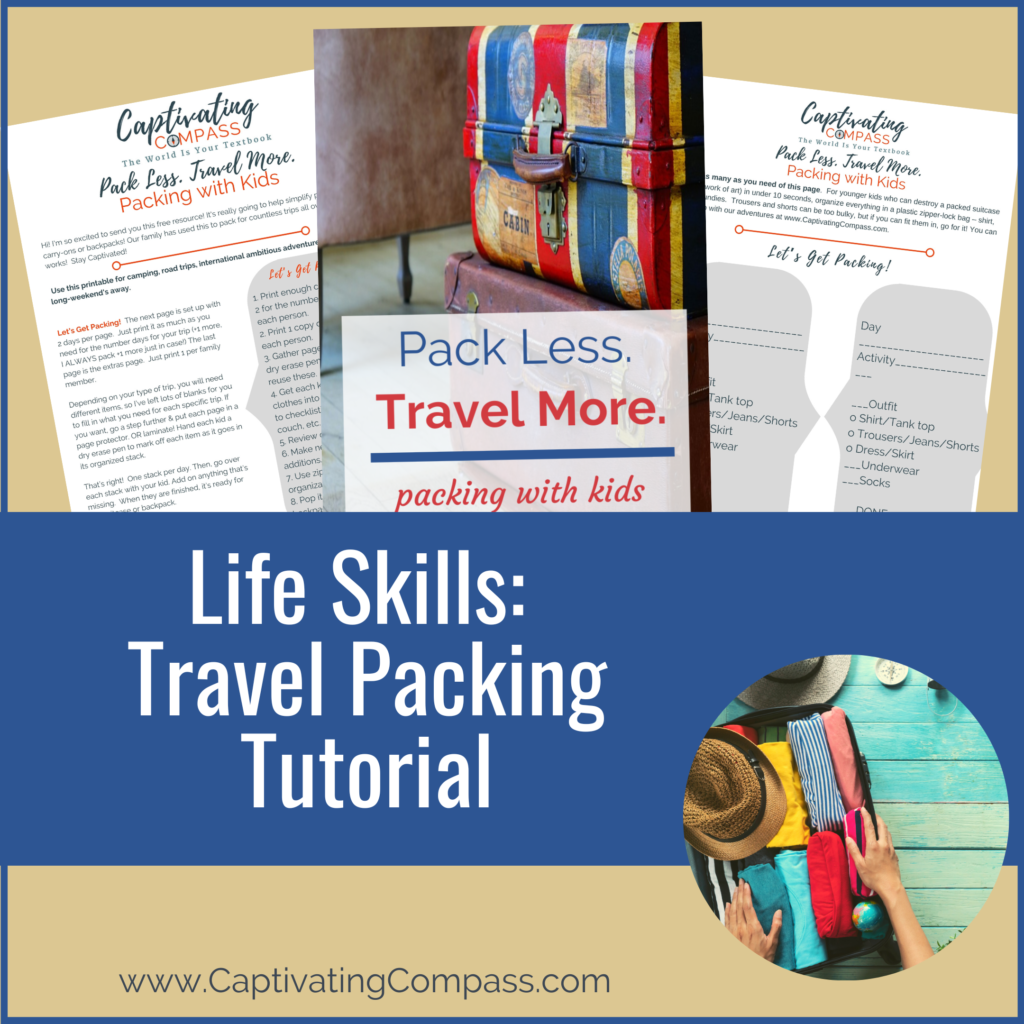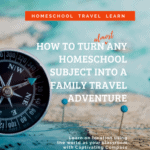
It starts with a dream, and a passion to go. The Trip Planning Worksheet for Teens will help you help your teen dream, plan and go on the adventure of a lifetime. The perfect companion resource (at the end of this post) is the Dream, Plan, Go! Mini Travel Planning Course. Use it to ignite the dream, map out the plan and find the gear to go wherever your travel dreams take you.
Table of Contents
Why Teens Should Travel
Travel is an adventure. Whether you’re traveling to visit a college or university, on a one-week family holiday, or are planning a gap year adventure of a lifetime, traveling can
- make your teen a happier person by building self-confidence,
- provide new experiences and memories,
- allow for a break routine
- create an opportunity to meet people from all over the world helping your teen to learn from others and broaden their worldview.
Now, let’s get started with understanding the details of a trip planning worksheet for teens.
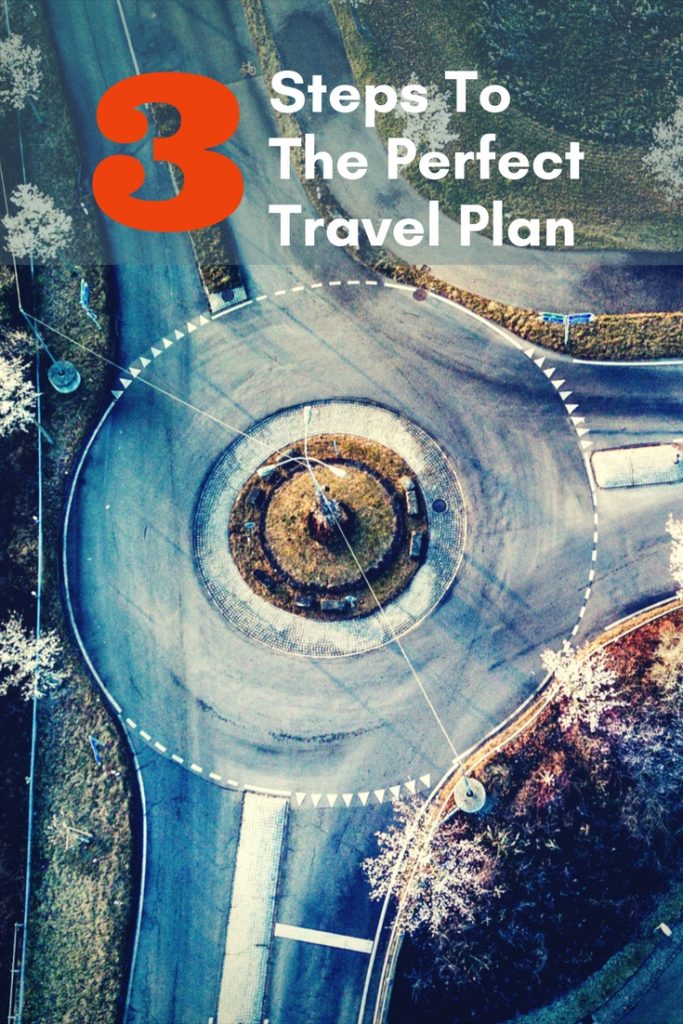
3 Steps To The Perfect Travel Plan.
Three steps? That’s it? Is that all it takes for the perfect travel plan? I bet you think I’m kidding you! Nope, that’s it! It boils down to just 3 basic steps. Now, I’m not going to say these will be easy (although they could be), or fast (but I’ve packed & been on a train in 1.5 hours – with kids!) But, there really are just three steps to achieving the trip of your dreams.
Dream. Plan. Go! That’s it!
Teens, and those planning their first trip, may need the basic steps broken down a bit with individual questions. They can use the free Teen Trip Planning worksheet to help them sail through the steps and plan their next trip or next adventure with friends.
Planning – The Secret Sauce.
Step 2 is all about the travel plan. Grab the Travel Planning Worksheet for your teen (or for yourself).
Once you know why you want to travel and where you want to travel, step 2 is in full swing. It’s time to add the secret sauce! Planning. A well-thought-out, but still flexible, plan is worth every ounce of effort you invest. This is the time to create a budget, a time frame, and a “let’s do this” list. If you are new to planning this type of travel, check out my travel planning course. I’ll show you how to crack the travel planning code one step at a time. Ready to add a dash of the secret sauce? Let’s go!
As you begin to dream, you answer the “Why” questions of your travel plan. Travel dreams start taking shape. Excitement builds and you find yourself considering vacation time and airline tickets. Your dream has come alive! It has focus & purpose and you are one step closer to its reality.
Tools To Map The Plan.
- Dream. Plan. Go! Travel Planning Workbook
- Travaa.com
- Captivating Compass’ USA travel posts with travel guides and lesson plans.
Time and Date
Planning for the next vacation or first trip solo is important. To help, use a travel planner template. Here’s what to do:
- Decide if it’s a bucket list item or a normal trip (like going to visit a college or university).
- Get a travel planning worksheet like this one. (there are also some templates in places like Google Docs.
- Look into activities and sights – availability, cost, and times.
- Create an itinerary and budget.
- Remember any necessary documents – passports, visas, photo id,
When you’re done, you’ll be ready to go – less stress, more ease.
Budget
Google Sheets is perfect for creating a trip planning worksheet. The Google workbook can act as a to-do list and budget for the details of your trip. With all info in one place, it makes it easy to access when needed.
To make your own worksheet, start by opening a new document in Google Sheets. Create a table with columns for categories like transportation, accommodations, food, activities, and miscellaneous expenses. For each category, add specific expenses and their costs. This helps create a personal budget for your trip.
The free printable below will help you think through the budget and many other factors a teen needs to consider when planning a trip.

Include a section for your itinerary, confirmation numbers, and emergency contacts. Add a column for notes to write extra details about each expense.
When planning, consider travel insurance and credit cards with travel rewards or low foreign transaction fees. Add these to the worksheet as a reminder to research and arrange.
Using a Google Sheets workbook ensures all details are accounted for and helps you stay organized.
Choose A Destination
Choosing a destination is often closely related to why you want to travel. It can also be as simple as:
“It’s affordable! Let’s go there!.”
“Wherever I can see giraffes in the wild.”
“Wherever I can learn about the ancient civilizations.”
“Where I can find the fastest rollercoaster?”
Begin to think about your personal goals for travel, you will refine your focus and pinpoint the passion inside. Whether you are planning family trips, a weekend trip with friends, or a few upcoming trips to visit colleges or universities, the best way to keep it all organized is with the travel planning worksheet.
Accommodation
Accommodation is an important part of any trip planning. It involves hotels, info, and other elements that can affect a teen’s travel experience. To make a good plan with the right lodging, do these things:
- Create a list of accommodation wants and needs beforehand. Do you need a hotel with a pool? Wheelchair access? Note all that will make your stay good.
- Look for hotels that fit your needs and budget. Use online travel services – like Expedia, Booking.com, or TripAdvisor – to find and book hotels that meet your criteria.
- Once booked, keep hotel details safe. This includes things like confirmation numbers, check-in/check-out times, and policies in a visible spot.
- Be proactive. Call the hotel a few days before to ensure any extra requests are taken care of.
By following these steps, teens can plan and enjoy a relaxed trip with a comfortable accommodation experience that’s perfect for them.
Pro Tip: Keep your worksheet on your phone or tablet for easy access!
Lodging
Travel Planning Worksheet: Destination questions
Is your teen planning an epic road trip? Get ready for some serious fun! But don’t forget to prepare in advance. To help teens organize the travel info they need to add these items to your trip planning worksheet.
- Type of Trip:
- How long?
- How many people?
- What’s your budget?
- Day of Your Trip:
- When are you leaving?
- Any events or activities you want to see/do?
- Important Travel Info:
- Destination address?
- Best route?
- Accommodations & prices?
- Best Practices:
- Pack light – only necessary items.
- Map & GPS are helpful for directions.
- Snacks & drinks – don’t forget!
Answering these types of questions on the worksheet will help teens (and parents) can feel prepped & ready! Have fun and enjoy the journey!
Transportation
Transport is a key part of any trip plan. Whether it’s a family holiday, an adventure alone, or a journey with friends, you must think about the transport methods, like car hire or rental, flights, or public transport. Here are a few other transportation points to consider while planning a trip:
- Flight Info: If you’re flying domestically or internationally, have your flight details like number, departure time, and arrival time.
- Car Rental: Pre-book your rental car and note down pickup/drop-off locations, dates, and times. Keep your rental agreement handy.
- Public Transport: Use a trip planner template or other resources for bus, train, or subway routes, schedules, and fares.
- Time of Day: Think about the time of day when planning travel. Rush hour and peak times need extra planning.
Put all the info in your trip planning worksheet. And don’t forget to list the great stuff at your destination – sightseeing tours, cultural experiences, or local food.
Pro Tip: Book transport in advance to avoid last-minute chaos.
These resources will help you and your teen pick the best transportation options for an affordable trip of a lifetime.

Keep reading to find out what your teen needs to do before and during a trip to plan well, stay safe, and have fun.
Learn while you Plan with World Geography
Navigating Life: Skills for Success

Listen to this podcast about the class I teach at Arise Home Education. Learn more about life skills and how to provide hope and direction for your teen’s future. Complete course details here.
Pack less. Travel More.
How Much Should Be On Your Teen Packing List?
Most trips only require a week’s worth of clothes. In fact, if you are able to wash a few things every few days, you could take even less. My top tip for making the best use of space is to make sure that your teenagers use packing cubes. They save so much space and are perfect for allowing your teenage girl to justify more outfits on their travel packing list. Just let her know whatever fits in the cubes in their own suitcase is allowable.
It’s smart to use a trip planning worksheet when you’re planning a trip. This will help your teen stay organized and remember important details. Here’s what should be included:
- Packing List: Don’t forget any essentials!
- Daily Itinerary: Where to go and what to do.
- Travel Agents: Contact info.
- Confirmation Codes: For flights, hotels, and cars.
- Phone Numbers: Emergency contacts, accommodation, and transportation providers.
- Important Information: Addresses, directions, and language translations.
- Daily Tasks: Call your hotel to confirm reservations, early check-in for flights, etc.
- Travel Journal: Record your experiences.
Gear to Consider
- Airline Approved Carry-On
- Packing Cubes
- Portable Power Bank
- Universal Electrical Adapter
- Osprey Farpoint 55 – Voted the 2017 Best Traveler’s Backpack
Let’s do this!
If you’re ready to:
- do more traveling with your friends, family, or go solo
- launch your kid into adulthood with a solid set of travel-planning skills
- learn your family’s travel and learning style,
Sign up for your printable.
So…Be THAT Family.
Go for it! Be THAT family that travels together and comes home with epic tales of adventure, courage, and a greater sense of togetherness. Launch your teen with confidence and life skills that will be enjoyed for years to come.
Capture your memories, share your stories, and plan the next learning-on-location adventure. Apply the lessons learned beyond life skills to your geography and current events schoolwork, your literature, history, and even your math and language arts.
Every time you travel, make teachable moments come alive with your family by learning on location using the world as your textbook to learn life skills through family travel.
Frequently Asked Questions
A trip planning worksheet is a tool that helps teens organize and plan for their upcoming trip. It includes information such as transportation, lodging, activities, and a budget.
Planning their own trip can help teens develop important life skills such as budgeting, decision-making, and independence. It also allows them to have a sense of ownership and responsibility for their travel experience.
The worksheet pack can be used as a guide to help teens plan their own trip. They can fill in the information and make adjustments as needed. It can also be used as a tool for parents or guardians to help teens plan their trip.
A trip planning worksheet should include information such as transportation, lodging, activities, a budget, a packing list, emergency contacts, and any necessary documents such as passports or visas.
There are many resources available online that offer free trip-planning worksheets. One additional option for sale is the Life Skills for Teens Power Bundle, which includes helpful resources for teens to use as a companion to the free trip planning worksheet pack.
Yes, a trip planning worksheet can be used for group travel. It can be adjusted to include information for multiple travelers and can help ensure that everyone is on the same page and prepared for the trip.
You May Also Enjoy
- Let’s Study Famous Folks – December Calendar
- 75 Positive Affirmations: Printable for your Homeschool
- Let’s Study Famous Folks- November Calendar Of Famous People
- How To Turn Any Homeschool Curriculum Into A Family Travel Adventure.
- Top 5 Safest Places to Visit in South America for Homeschoolers
- Life Skills in the Kitchen: Basic Cooking for Teens
